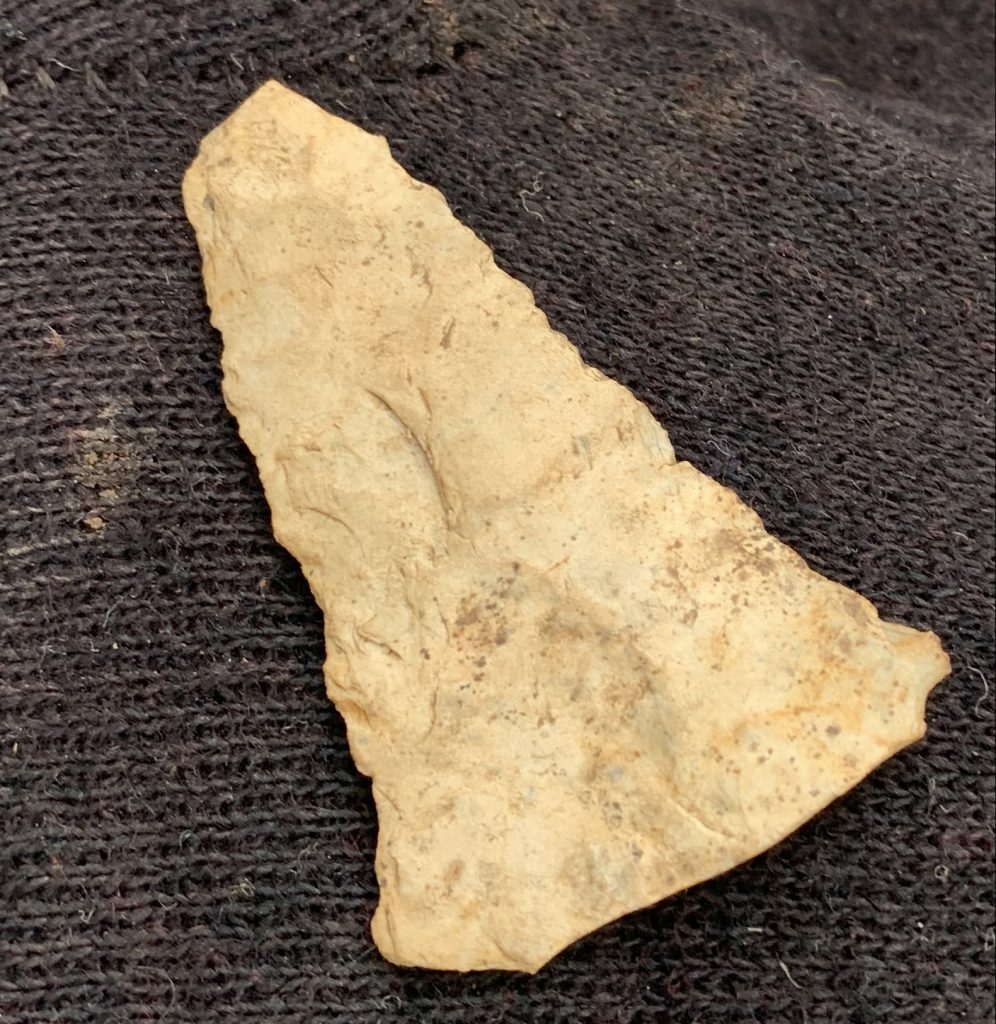Pre-historic spear point discovered at local farm
Visiting the back part of a private local farm in Zebulon last month, several Preservation Zebulon members found what looked to be an arrowhead on a quartz-filled ridge within a forested section of property. It turned out to be much older – and is identified as a Kirk Stemmed Spear Point dating to 7000-6000 BC.
This spear point is heavily patinated, weakly serrated, and beveled in cross section. Its stem has been broken off. “It is made of rhyolite probably quarried from the Morrow Mountain State Park area located near the Uwharrie National Forest,” reported Lee Tippett, a retired archaeologist from the NC Department of Transportation and the South Carolina State Historic Preservation office.
This artifact type is well documented and widely distributed across much of the Eastern United States. “The type was first recognized by Dr. Joffre Coe during his excavations at the Hardaway Site in Stanly County, North Carolina. Kirk Stemmed Spear Points have been securely dated to the Early Archaic Period (8000-6000 BC). Research conducted by archaeologists across the southeastern United States indicates that this specific spear point type dates to the later stages of the Early Archaic Period (7000-6000 BC),” Tippett states.
The kirk was found on a ridge close by Moccasin Creek, and was likely used in hunting by indigenous people who roamed in a 150 mile area radius as hunters and gatherers and lived a subsistence lifestyle 800 years ago. The ridge would have been a prime spot for hunting as animals came to the creek to quench their thirst.
Morrow Mountain State Park is 135 miles away. In the early Archaic Period, people were hunters and gathers, and they roamed the area for food. In among the local quartz were several other rhyolite specimens that likely also came from the Uwharrie National Forest area 8000 years ago,Tippett observed.
Tippett, who has a Masters Degree in Anthropology/ Archaeology from the University of Tennessee, is a retired member of the Register of Professional Archaeologists and also retired in 2016 from a private sector archaeological research firm. We are lucky to have him as a Preservation Zebulon member, assisting us with placing context around local remains, landscapes and ruins in the Little River area.


